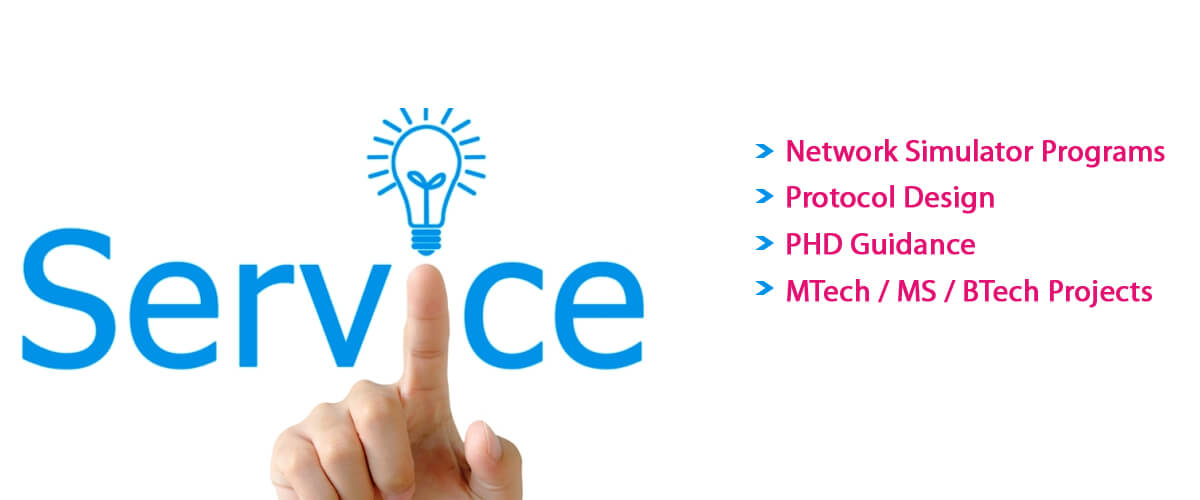6G Networks Projects Examples Using NS2
6G Networks Projects Examples Using NS2 tool that we worked on and helped students with are listed below. If you need expert advice, feel free to reach out to us. We have all the necessary tools and resources to assist you. Just send us an email at ns2project.com, and we will quickly help you with top-notch paper writing and publication services. Given below is some samples of 6G Networks projects that can execute using NS2:
- Ultra-Reliable Low Latency Communication (URLLC) in 6G
- Objective: Replicate the performance of URLLC in 6G networks and compute their reliability and latency for crucial applications (e.g., autonomous vehicles or remote surgery).
- Focus Areas:
- Execute URLLC protocols and aspects
- Mimic the situations with low-latency requirements
- Estimate network performance under various conditions (mobility, interference)
- Challenges: Adjusting NS2 to manage enormously low latency scenarios and then make sure that reliability in high mobility environments.
- Massive Machine Type Communications (mMTC) in 6G
- Objective: Replicate massive IoT deployments utilising the mMTC in a 6G environment to compute connectivity, network congestion, and scalability.
- Focus Areas:
- Managing massive device connectivity
- Executing effective resource allocation algorithms
- Learning network performance under heavy load conditions
- Challenges: Mimicking a large number of devices and enhancing the resource allocation within dense environments.
- Terahertz Communication in 6G Networks
- Objective: Replicate the Terahertz (THz) communication using 6G networks that concentrating on ultra-high-speed data transmission across short distances.
- Focus Areas:
- Changing NS2 to support THz frequency bands
- Replicating high-speed data transmission situations
- Examining the effect of THz communication on bandwidth, latency, and energy consumption
- Challenges: Integrating THz communication characteristics, like high path loss and limited range, into NS2 models.
- 6G Network Slicing for Service Differentiation
- Objective: Execute and mimic a network slicing in 6G to allow various services (e.g., IoT, eMBB, URLLC) on the similar physical infrastructure.
- Focus Areas:
- Make various network slices with single QoS requirements
- Imitate resource allocation and isolation between the slices
- Assess the performance of each slice according to the service requirements
- Challenges: Executing resource isolation among the slices and make sure that fairness in resource allocation.
- AI-Driven Resource Allocation in 6G Networks
- Objective: Improve and replicate the AI-based algorithms for dynamic resource allocation in 6G networks to enhance the network performance.
- Focus Areas:
- AI/ML algorithms for real-time resource allocation (bandwidth, power)
- Dynamic optimization of network parameters rely on the traffic patterns
- Performance analysis in scenarios with differing the load and network conditions
- Challenges: Incorporating AI/ML algorithms in NS2’s simulation framework and make sure that real-time decision-making.
- 6G-Enabled Vehicular Networks (V2X)
- Objective: Mimic 6G-enabled vehicular communication networks to estimate their performance in high-mobility situations, like vehicle-to-vehicle (V2V) and vehicle-to-infrastructure (V2I) communication.
- Focus Areas:
- Mimicking high-speed, low-latency V2X communication
- Examining the influences of 6G features such as beamforming and mmWave communication
- Focusing on network reliability and coverage in urban environments
- Challenges: Modelling high mobility and quickly changing network topology using NS2, and maintaining low latency with consistent data rates.
- Edge Computing in 6G Networks
- Objective: Mimic edge computing within 6G networks and compute its role in minimizing the latency and enhancing computational efficiency for real-time applications.
- Focus Areas:
- Executing edge computing architectures using NS2
- Replicating data processing and offloading at the network edge
- Calculating the influence of edge computing on latency, energy efficiency, and bandwidth
- Challenges: Modelling realistic scenarios in which edge nodes are handle heavy traffic, and mimicking the latency reduction in real-time applications.
- 6G Backhaul Network Optimization
- Objective: Enhance and replicate the 6G backhaul network to support ultra-high-speed data transmission including a focus on minimizing the bottlenecks.
- Focus Areas:
- Creating an efficient backhaul architecture
- Executing dynamic routing protocols to enhance the data flow
- Examining backhaul performance such as speed, reliability, and latency
- Challenges: Replicating large-scale backhaul networks with dynamic traffic patterns and adjusting the backhaul network to assist enormous data transmission from the 6G devices.
- 6G Network Security and Privacy
- Objective: Execute and mimic security protocols within 6G networks to assess their ability to defend versus cyberattacks, like denial of service (DoS) and eavesdropping.
- Focus Areas:
- Executing quantum-safe cryptography for 6G
- Mimicking network security procedures for ultra-low-latency applications
- Estimating the effect of security mechanisms on network performance
- Challenges: Incorporating advanced encryption then privacy mechanisms into NS2 and balancing security with latency requirements.
- 6G Green Networking
- Objective: Replicate energy-efficient 6G network architectures to investigate how green networking concepts can be minimized the environmental impact of upcoming communication networks.
- Focus Areas:
- Energy-efficient routing protocols
- Renewable energy integration including base stations and network nodes
- Evaluating trade-offs between network performance and energy consumption
- Challenges: Exactly modelling energy consumption within NS2 and incorporating green energy sources into the simulation.
These projects could need changing and prolonging the NS2 to assist the high-speed, high-frequency, and low-latency features of 6G networks, in addition to integrating AI-driven algorithms and edge computing principles into the simulation framework.
As illustrated above, we had demonstrated clearly on how to execute the 6G Networks project using given some relevant projects instances in the simulation environment NS2 that contains clear objective, focus areas and challenges. Moreover, we will share additional instance based on your requirements.







